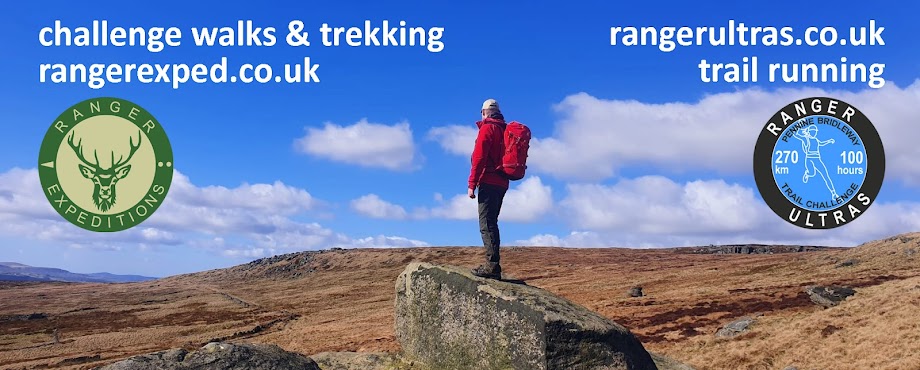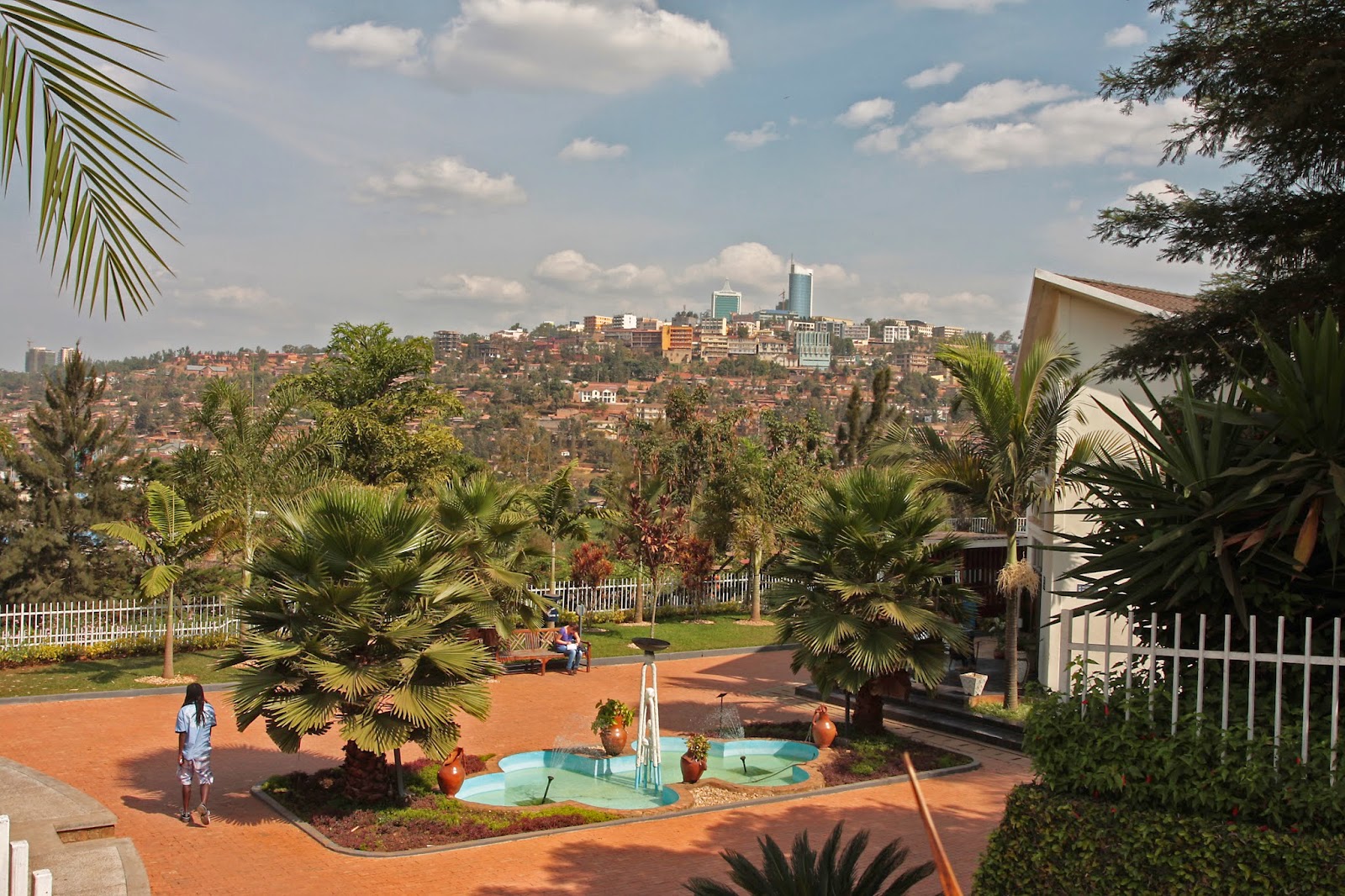Ok, so there's still 9 months until the contenders assemble at the start line in Edale, on an inevitably chilly January morning, to face down the Spine and all the magnificent miles of the Pennine Way that lay ahead.
It's going to be tough: Bogs to be traversed, long hours of darkness, freezing wind chill and possibly snow. To complete the Spine and Spine Challenger will require mental toughness to overcome all the physical, emotional and technical challenges. Some, no, most racers will need to dig deeper than they have ever done before. To write emotively, it may even represent an intense psychological journey to places in the mind rarely visited.
Each year on Spine Mountain Safety Team, since the first race in 2012, I have witnessed awe inspiring feats of achievement: multiple finishers, race records smashed, previous DNFs returning to lay ghosts to rest and triumph in extreme adversity. There have been cheers, laughter, smiles, sometimes tears and the most uplifting spirit of camaraderie. One fact is certain, there are many people who feel passionate about the Spine. The huge popularity and continued success of the race is testament to this - one has just to read the varied items of social media and see how the entries are now filling up. In 2014 trackers were introduced which became an on-line sensation and a worldwide hit with home spectators.
Spine - Success Factors
The whole Spine organisation, mountain safety and medic team naturally want every racer to achieve their ambition. But the statistics remind us that many racers will not complete. I think the Spine Race is a real leveller. Past results have shown many elite ultra runners who have been caught off guard by the conditions and attrition rate.
There are a number of factors and reasons for this. But the ability to navigate stands out.
Over-reliance upon technology such as GPS is no substitute for proficient use of map and compass. As I have said in previous blogs, I am not anti-GPS. It is very useful for tasks such as quick position confirmation and relocation, provided you know how use the information.
But, many of the most consistent Spine performances have come from racers who only used their GPS once or twice in the whole race. This is because they are racing with their 'heads up'. Mentally, they connected to the terrain, absorbing and processing what they see with a quick glance at the map. They are not a slave to a dot on the GPS screen. Putting the race in terms of enjoyment: surely taking the more active role described above, makes time pass quicker, provides more vibrant positive memories and gives the brain lots of interesting stimulation whilst keeping those negative vibes at bay.
By introducing few key map reading skills and a little regular practice, a racer can break free from being a slave to the GPS. The Spiners whom I have trained and mentored in route finding skills have all found greater confidence and enjoyment from the ability to independently navigate.
Spine - Navigation
Let's look at the navigational challenges posed by the Spine Race. Yes, the Pennine Way is a national trail and the footpath is well defined along many sections. And yes, most of the time pointing yourself in a northerly direction gives roughly the correct direction of travel. But, not all of the Pennine Way is waymarked and those signs are often not there when you most need them: i.e. on top of the moor, in the dark and the clag has reduced visibility to a few metres. The further north you progress along the Pennine Way the more sporadic the signage becomes, up to a point on The Cheviot where at least one of the signs is actually wrong.
Also consider the problems posed in 2013 when a blizzard completely covered the trail.
Thigh deep drifts slowed the racers to 1km per hour. Several GPS units suffered complete electronic failure. The life on those GPS still working was severely limited due to the cold and you did not want to expose your hands for too long in those conditions fumbling around changing batteries. These were circumstances where racers relied upon fundamental navigation skills such as pacing, timing and contour awareness to reach the safety of a mountain refuge.
A brief but intense blizzard shortly after the race start in 2014 caused navigation issues within the first few miles, as Marcus Scotney (winner of the Challenger) described to official photographers/filmakers Summit Fever in a excellent post-race interview:
"I got up to Kinder Low, then suddenly everybody who had been in front of me (had) stopped...firing GPS, maps and compasses out, looking very bewildered"
Spine - Navigation confidenceThree points worth considering:
Every year, some racers make catastrophic errors in navigation which consume so
much energy and time as to effectively end their race.
Other racers lack confidence in their navigation ability and so team up with others
who can route find. There is nothing in the race rules to say you cannot do
this (journeying together often gives a welcome morale boost).
However, does this mean that their personal race plan is compromised?
Even the best navigators occasionally go wrong. I know several Spine racers who
are excellent navigators who have made route finding errors. The difference is
that that they quickly recognise and correct their error without it unduly
affecting their mindset.
Fear, lack of confidence and the impression that to use a map and compass needs some kind of mystical sixth sense are all barriers to taking that first step in learning to navigate. I have seen this in many new clients. With a little guidance, they quickly discover the truth that navigation is accessible for everyone, with a few simple rules where the most important tool is your eyes. It is a revelation which always gives me great pleasure.
The navigational techniques for quick and efficient journeying, and to overcome short sections of tricky terrain during the Spine Race are equally straightforward.
Spine - Strategy
I am very enthusiastic about learning though experience and of course we all want to enjoy the experience of success. But there are also valuable lessons to be learnt from events that did not go to plan or results that did not satisfy. We can also make short cuts to performance improvement and personal success by keeping an open mind to the experiences, both good and bad, of others.
The Spine Race has been described as a fast paced expedition adventure race and I totally agree with this. To finish demands a varied skills set along with mental and physical toughness. Notice we have mentioned neither running or winning in the above description.
"I think (the race) is almost perfect in its cruelty"
If you analyse the race timings you may be surprised at the average ground speed of even the fastest racers. Indeed, in my February 2014 blog were I reported on the findings of my post-Spine Race footwear survey, many respondents said how surprised they were at the amount of time they spent walking. One could question how much time it is physically possible to spend running on a race of this duration, carrying a pack with the compulsory safety equipment and supplies.
So, the Spine cannot be described as a pure running race. But be under no illusion, you do need to cover the ground at a pace which in reality will be a mix of fast walking, jog-trot, run and by the end, doing whatever is necessary to finish.
A racer will also need a full compliment of basic, but well practiced, expedition skills. The ability to look after oneself is key to lasting the course. This can be broken down into: proper hydration, food input, energy expenditure, camp craft, kit, balancing body insulation against hypothermia and sweat loss, foot care, checkpoint transitioning etc etc. Neglect any one of these factors and the effects have been seen to snowball, encroaching into all other aspects of the racer's game. To quote an expression 'the wheels come off'.
The Complete Racer.
The most consistently successful Spine Race finishers have not necessarily been the fastest mountain runners, infallible navigators, or the most experienced expeditioners. What they have proved is that an all round sorted approach across every aspect of their race is a highly effective strategy.
The Complete Racer courses (offered by Ranger Expeditions) are developed to share the knowledge, training and skills required for this sorted approach and for a successful attempt on the Spine and Spine Challenger.
Through informative and enjoyable training, drawing upon personal experience of endurance events and expedition leadership, with course specific guidance and tips, we aim to help Spiners build their own personal Complete Racer skills set and strategy which is robust and best suited to their ambition. Many of these skills are also readily transferable to other technical ultra races.
This is not a 'one size fits all' approach. We take a detailed look at all the factors which should be considered in a Spine Race plan, use real examples from the race itself as well as borrowing lessons from the wider world of expeditioning.
In summary, having the knowledge and ability to take control of your whole race strategy can only be a good thing.
The Courses & Events:Ranger Expeditions, thoughout 2014, will be offering a range of Navigation and Race Skills courses, underpinned by the Complete Racer theme. There are fixed date open courses for racer in the South UK and the Peak District.
These are also available on flexible dates to suit clients who would prefer 1:1 training and useful discounts for groups (of 4) who book as one team.

With 12 to 14 hours of darkness (depending upon cloud cover) during the Spine Race, our Night Navigation course will help you with efficient route finding and to stay on track during the night.

Also, we return on the Friday 9th January 2015 with our popular Pre-Race Masterclass, for a last confidence building session with lots of race tips and energy saving strategies, as well as a specific course navigation review.
The masterclass can also purchased as an add-on to any 2 day course, or arranged to suit a team presentation.
The EDALE PEAK CENTRE also has great value pre-Spine Race accommodation, which is sure to be very popular. Book early to avoid disappointment.

To discuss any of your race, mountain navigation or hill skills training, give Stu a call or email:
Stu Westfield
Ranger Expeditions
rangerexped@hotmail.co.uk
07890 620 274























